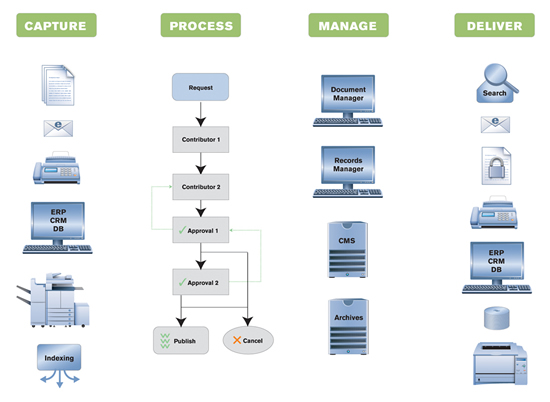Print Suppression Strategies
Print suppression strategies from Paperless Productivity® allow for enhanced security, increased efficiency, and greater ability to track and archive documents. Such benefits are achieved because vital business information such as purchase orders, invoices, and statements can be electronically exchanged via fax, email, certified email, encrypted PDF and SMS.

Print suppression strategies from Paperless Productivity® enhance security, increase efficiency, and improve document tracking and archiving. By replacing printed documents with electronic transmission via fax, email, certified email, encrypted PDF, and SMS, organizations can eliminate unnecessary paper usage and streamline workflows.
Key Benefits of Print Suppression
Improved Customer Responsiveness
Incoming purchase orders and other documents can be automatically scanned, indexed, and routed for processing without ever being printed. This eliminates manual handling delays, allowing for faster response times and improved customer service.
Regulatory Compliance Support
Regulatory mandates require secure document retention and controlled access to sensitive data. Print suppression ensures compliance with HIPAA, Sarbanes–Oxley, Gramm–Leach–Bliley, and other regulations by keeping documents securely stored and reducing the risk of unauthorized access.
Cost Savings and Efficiency Gains
Reducing print dependency cuts costs related to storage, lost documents, postage, waste, transportation, and labor inefficiencies. Organizations benefit from automated month-end closing, electronic invoice processing, online check proofing, and instant invoice retrieval.
Faster Invoice Processing and Cash Flow Improvement
Eliminating printed invoices accelerates accounts receivable and payable workflows. Electronic invoices move through processing faster, triggering automated workflows that reduce manual intervention. Automated proof of delivery ensures customer service and collections teams have instant access to necessary documents.
Streamlined Document Tracking and Archiving
Incoming faxes are automatically archived in a searchable electronic database, making retrieval fast and efficient. Users can locate specific faxes, search text within documents, print only necessary pages, and forward faxes directly from their desktop. Auditing capabilities improve accountability and security.
Ready to eliminate unnecessary printing and streamline your document workflows? Contact us today to discuss how print suppression can improve efficiency, compliance, and cost savings.
paperless solutions
Paperless Productivity®
Learn how to leverage and benefit from paperless workflow solutions, gain access to live and recorded informative webinars.

